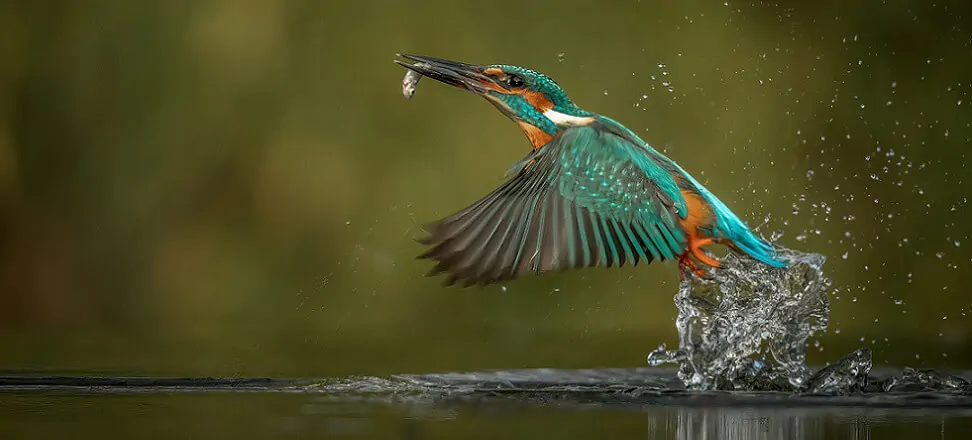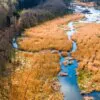Issue 14/2024, News
The world’s best places for waterfowl watching
There is no shortage of places around the world that delight in the diversity of avifauna and picturesque landscapes. From vast marshes to riverbanks, these locations offer an unforgettable experience in observing a variety of species for experienced ornithologists and amateurs alike. Here are examples of the most unusual waterfowl-watching locations to visit with binoculars.
Camargue National Nature Reserve, France
Located in southern France, in the Rhone River delta, the Camargue nature reserve, classified as a UNESCO Biosphere Reserve, is a place whose greatest attraction is the opportunity to observe pink flamingos in their natural habitat. In addition to them, this diverse region encompassing marshes, salt marshes and vast lakes is also home to herons, white storks and numerous species of ducks. Enthusiasts traversing the reserve with binoculars, who will be lucky, may also come across the revered ibis.
Everglades National Park, Florida, USA
The vast wetlands, mangroves and freshwater prairies of Florida’s Everglades National Park create ideal conditions for a variety of bird species, of which there are more than 300 in the area.
In the Everglades you can see, among others. majestic great blue and white herons, as well as pink warblers with their distinctive spoon-like beak and white ibises. The abundance of waterfowl is complemented by various species of ducks, Canadian cranes and numerous migratory species of plovers and snipe, which stop in the region during migration.
Danube Delta, Romania
In Europe, in addition to France, observation enthusiasts should also visit Romania. The Danube River, which flows through the country, is listed as a UNESCO World Heritage Site and biosphere reserve. This area is one of the most biologically diverse places on the Old Continent.
Impressive pelicans can be found there, including the pink and curlew pelican. In addition to them, the area is populated in large numbers by gray herons, purple herons, modronose herons, white-breasted herons and blinds, as well as stilts. Among the ducks, there are pintails and cyrannets. The Danube Delta is also home to many species of terns and gulls, as well as plovers such as the sablefish and great curlew, which is considered an endangered species on the Red List of Polish birds.
Galapagos Islands, Ecuador
The unique ecosystem of the Galapagos Islands provides opportunities to observe a variety of waterbirds. Among them are brown pelicans, black-throated terns and great frigate birds with their characteristic red air sacs. Galapagosian albatrosses, which are classified as a critically endangered species, are also an important part of the avifauna of the archipelago. In addition to them, non-flying cormorants can be mentioned, as well as blue-footed, red-footed and masked goosanders.
Polish oasis for bird lovers
Poland also has no shortage of picturesque regions where you can admire a variety of waterfowl species. Just take your binoculars and head to one of the following places.
Warta Mouth National Park
The extensive floodplains and wet meadows of the Warta Mouth National Park, located in western Poland, provide habitat for many species of waterbirds. Examples include whooper swans and mute swans, as well as mallard ducks, teals, loggerheads and roe deer. White eg rets and gray herons can also be found in the park, wading in the muddy waters, as well as marsh harriers, patrolling the area in search of prey. During migration periods, the park becomes an important stopover for fishers and waders, feeding in wet meadows.
Biebrza National Park
Among the places for birdwatching in Poland could not miss the Biebrza National Park, whose symbol is the ruff – a rare migratory bird that lives in wetlands. In addition to it, lapwings, aquatic warblers, cranes and snipe can be observed in the park, located in northeastern Poland. The Biebrza Valley, recognized by BirdLife International as a bird sanctuary of world renown, is also a habitat for protected dotterels.
Hel Peninsula
It is worth going to the Hel Peninsula with binoculars especially in winter. It is then that you can meet there not only various species of water birds commonly found in Poland, such as mute swans, mallards, coots, cormorants, but also many representatives of breeding birds that arrive from the north and are present in Poland only at this time of year. Among them are the eider, which is particularly protected in Iceland, as well as the uhla, the grosbeak, the great otter, the partridge, the scoter and the endangered refrigerator.
Photo. main: Vincent van Zalinge/Unsplash

 Polski
Polski







